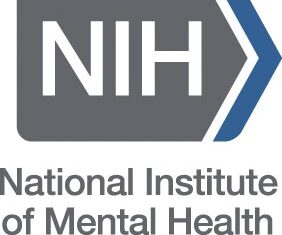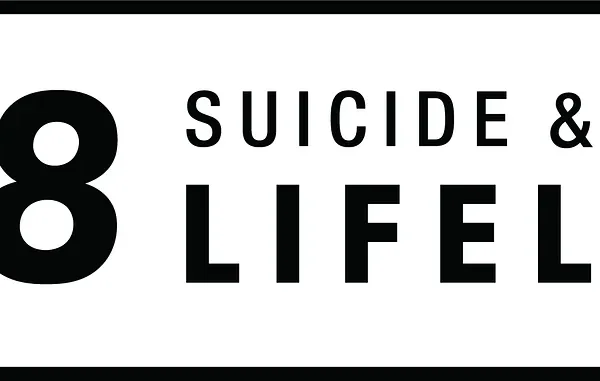September 1, 2021 – The COVID-19 pandemic has served as a clear reminder of how hospital emergency departments are truly on the front lines of providing care in the midst of public health crises. It has also highlighted how quickly our hospitals can be stretched to capacity and how vital the need is to reduce stress on our healthcare system and providers. In preparing for emergent healthcare crises, it’s imperative we use innovative solutions to efficiently deliver care in the midst of disaster.
Emergency departments are also our first line of defense on another, less visible, continually growing crisis: suicide care. With 14 million behavioral health emergencies per year (and growing 12% annually) and ongoing healthcare workforce shortages, there is a very real risk of emergency departments being pushed beyond their breaking point. A scalable solution that does not demand extensive training, costs, or long-term recruitment efforts is critical to fill the gap of expertise necessary to help prevent suicide. The most viable answer: Technology.
Technology impacts, enhances, and improves physical treatment for patients in nearly every aspect of the emergency room. From MRI machines, to advanced computer diagnostics of bloodwork, to scopes that allow surgeons to see microscopic details in high clarity, technology works in tandem with healthcare professionals to deliver safer, more efficient, and more effective lifesaving care. Similarly, we have the opportunity to leverage technology with human touch to optimize the care of individuals in the midst of a suicide crisis and reduce the strain on our healthcare workers.
Using Technology to Improve and Deliver Compassionate, Personal Suicide Care When Most Needed
With the increased prevalence and convenience of telehealth, more and more people across all demographics have become comfortable with using technology in healthcare. In fact, data show that patients are more forthcoming with technology than a person. Given that, technology designed by trained suicide crisis experts can deliver a comprehensive suicide assessment in a way that is more approachable by individuals experiencing behavioral health crises. With a guided suicide status interview in an automated digital ecosystem, patients are able to receive compassionate, evidence-based care quickly in emergency departments which may be overcrowded.
Without personalization, technology can feel clinical and isolating, so it’s vital that a human connection is created for each patient. Shared stories from people with lived experience – even through videos – can help inspire hope and create meaningful connections, thereby engaging patients with peer support. Technology can also help guide the patient through comfort and skills videos or activities drawn from Cognitive Behavior Therapy and Dialectical Behavior Therapy to help patients stabilize the crisis, decrease agitation in the moment, and empower coping strategies for the future. Automated and adaptive processes can also walk patients, step-by-step, through the creation of an empowering, high-quality Crisis Stability Plan to help them cope with suicidal urges, creating a Lethal Means Safety Plan to reduce access to means of self-harm, and provide ongoing post-visit support through mobile apps.
Technology Can Optimize Provider Care and Reduce Health System Risks and Costs
Using technology to ensure every patient quickly receives recommended care for a behavioral health crisis, as they would with any other health crisis treated in an emergency department, saves both time and cost. Suicide care typically takes 4x longer than other emergencies, equating to a loss of $2,264 per patient and a $32 billion problem in the United States. Technology can provide just-in-time training for staff to learn compassionate suicide protocols so they have the confidence and skills to help their patients in crisis, just like they would for heart attack, stroke, or sepsis.
Data show that using scientifically proven, evidence-based technology improves suicide care and prevention. Having access to reliable, easy-to-use clinical decision support and streamlined workflows helps providers quickly determine optimal care without delays from behavioral health staff who are in high demand and low supply. Further, workload is decreased and continuity of care is ensured by integrating patient self-reported data and provider notes into electronic health records to ensure full documentation of every encounter across the health system. The result is hours saved, risks and costs reduced, and an improved patient and healthcare provider experience.
Case Study: Jaspr Health Helps to Save Lives
Co-designed by suicide science experts, people with lived experience and leading health systems, Jaspr Health is one example of how technology can be used to improve suicide care. Jaspr Health is a trusted, digital suicide-care platform with automated, evidence-based protocols that improves the patient experience, optimizes provider care, and empowers health systems to reduce their risks and costs.
It is patient-endorsed, peer-reviewed and rigorously tested. In NIH-funded clinical research, hospitals that used Jaspr Health significantly outperformed care-as-usual. By combining the power and convenience of technology with human care and scientific expertise, Jaspr delivers reliable access to required, standardized evidence-based protocols to help stabilize patients. Suicide risk assessments, crisis stability planning, and lethal means safety helps healthcare providers build trust and extend support through care transitions without any additional burden on their staff.
Jaspr Health recently announced a partnership with Zero Suicide Institute, an international organization committed to preventing suicide deaths by catalyzing system-wide transformation in health systems. By bridging Jaspr Health’s digital suicide care platform with Zero Suicide’s aspirational challenge to eliminate suicide by providing training, consultation, and technical assistance in implementing system and provider-level changes, they can better support our healthcare workers on the front lines of the behavioral health crisis, and, ultimately, save lives.




